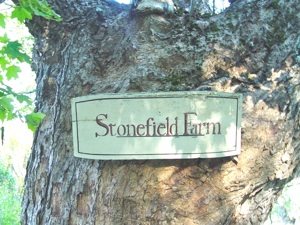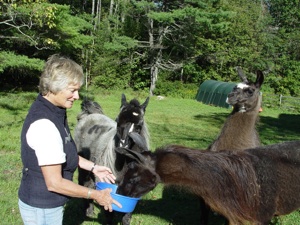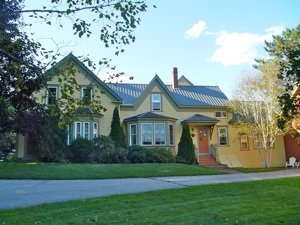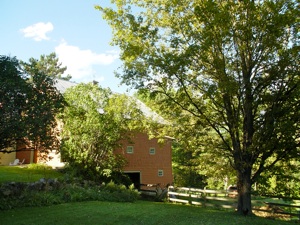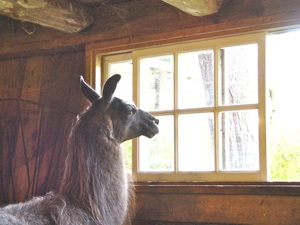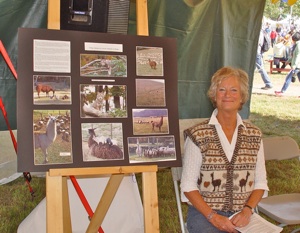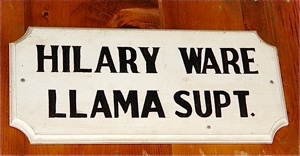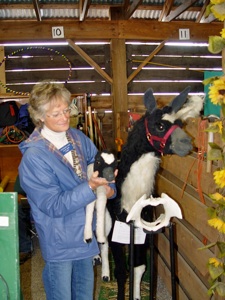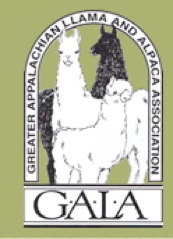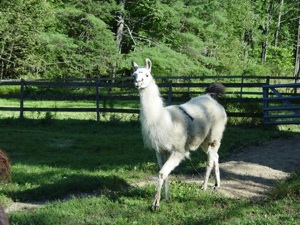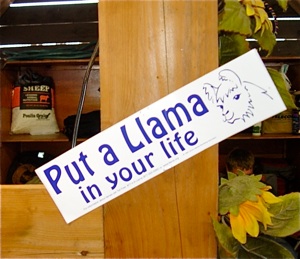Name: Hill & Gully Llamas
Address: Hilary and Don Ware
15 Dunn Road
Norway, Maine 04268
Phone: 207-527-2319
Email: hwware@gmail.com
Products and Services:
-llama owner
-resource for information on llamas
-educational workshop leader
-Llama Superintendent - Fryeburg Fair
-guard llama mentor
-llama birth educator
What Makes Hill & Gully Llamas Unique?
Over the years many farmers have been fortunate to have access to several books and resources to help them learn about the proper care, nutrition, and needs of their specific farm animals. With the introduction of the Internet, finding answers to many animal care questions has become even easier. In 1983, when Hilary and Don Ware purchased Tupac, their first llama, the scenario was much different. Available information about the diet, training, care, and the behavior of llamas was often quite limited.
Hilary Ware was always fascinated with llamas and she became interested in owning one after she fell in love with a llama she had met at Camp Winona in Bridgton. Stonefield Farm, the home of Hill and Gully Llamas, was truly one of the pioneers in the world of llamas in Maine. They were one of the first ten farms in the state to welcome llamas. There was certainly a lot more to raising llamas than the common assertion at the time by many who felt that they were “just a big sheep-cross.”
According to Hilary, llamas are one of the earliest animals to be domesticated after cats, dogs, and ferrets. As far back as six thousand years ago in the Andes Mountains in South America, llamas were used as pack animals and as sources of fiber. Hilary’s first llama, Tupac, was used as a professional packer, who was trained by Steve Crone and Telemark Llama Treks in Bethel.
As time passed, Hilary and Don built up their herd to a total of nine llamas. Hilary enjoyed attending llama shows and visiting various fairs. Tupac often traveled with her on visits to various nursing homes, elderhostels, local schools, and libraries. His participation in parades and live nativity scenes garnered a great deal of attention. Hilary and her llamas participated in Terry Beal’s Maine Llama Drill Team where sixteen handlers and their llamas attempted to march in unison in a choreo- graphed pattern to John Phillip Sousa march music. Sometimes they even did it!
The introduction of llamas at the Fryeburg Fair came to fruition thanks to Hilary’s efforts. She has served as the Superintendent of the Llama and Alpaca building at the fair for the past twenty-six years. Many fun llama-related events have taken place at the fair including the flapjack race where individuals competed with the equipment packed on llamas to see who could first cook a pancake on both sides on a little campfire that each one built. Educational exhibits and animals are housed in the Fryeburg Fair’s Llama and Alpaca barn. During the days that the fair takes place, llama training demonstrations and informational sessions are scheduled and low-key competitions are often organized.
If you have never seen a llama competition, they really are quite remarkable. A one-minute Maine Llama Association video of the llama high jump and the llama limbo events that took place at the 2009 Fiber Frolic can be viewed on youtube.com
For several years, Hilary and her llamas were involved in competing in various llama shows and competitions including the ones held at the Eastern States. Tupac was awarded the Versatility Champion Award at the Big E Llama Show. Eventually, Hilary decided to stick closer to home, organizing and running the Llama Show at the Fryeburg Fair for twenty-four years.
Hillary’s background as a registered nurse has proven instrumental in her ability to help educate people about the normal birthing process of llamas. She constructed a teaching model of an adult female llama. The fiberglass model of the llama’s pelvis was made from the mold of llama bones. It is used to clearly illustrate how a llama birth progresses. She cleverly named the model “Indiana Bones.” The model is so realistic that on an initial glance it appears quite lifelike.
For several years, Hilary served as the President of the Board of the Greater Appalachian Llama and Alpaca Association (GALA). The purpose of this Association is to “educate members of the public as to the breeding, raising, and caring of llamas and related camelids and to promote and advance the interests of the llama industry as a whole.” Hilary is a lifetime member of GALA, and Co-Chair of the 2014 GALA Conference in Portland, Maine.
In addition to her work with GALA, Hilary has chaired the Lama Medical Research Group which is a national committee which prioritizes llama and alpaca medical research requests for the Morris Animal Foundation.
As more people began raising llamas, the supply of llamas caught up with the market and prices for llamas dropped considerably. Hilary and Don decided to scale back on the number of llamas and they presently keep four llamas. Hilary explained that owning llamas engenders a specific lifestyle that involves committed daily care and an ever-deepening appreciation of their gentle nature and exceptional intelligence.
If one has the opportunity to observe Hilary with her llamas, it becomes immediately obvious that a very special relationship has developed. There is a distinct sense of peace and gentleness around the llamas. Hilary praised the llamas for their serenity and their amazing sense of curiosity. She explained that when an honest trust has been built through interactive training, the llamas reward their owners or caregivers with a deep affection and an extraordinary willingness to work together. She elaborated on how llamas are excellent mothers and how they have proven to be heartwarming companions for people.
After a great deal of experience and research, Hilary has become knowledgeable about the use of llamas as protectors. On the online memorial page to Tupac that has been posted to the GALA website, Hilary commented that he took on the immediate guardianship of their sheep flock. She explained that the height of llamas works to their advantage and that they “are fast as blazes.” According to Hilary, a guard llama will move between his/her flock and the threatening interloper, and run directly at the dog, coyote, etc. using front feet to stamp, and biting and screaming if necessary. This becomes an effective non-kill message to keep away any would-be predators. Hilary was invited to participate in a panel about the use of guardian animals at the Common Ground Fair on September 20, 2013.
Over thirty years have gone by since Hilary and Don Ware came home with their first llama. Hilary’s love for llamas has not waned. She has taken advantage of every opportunity to learn all that she can about these animals. Farmers in Maine who are interested in raising llamas are much more fortunate than the farmers of thirty years ago. There is now quite a bit more information and resources available to new owners. Veterinarians are more familiar with llamas. Llama associations have been organized. And, Hilary Ware, with all her knowledge and experience, has proven to be an invaluable resource for farmers needing some advice and some answers to their questions.




